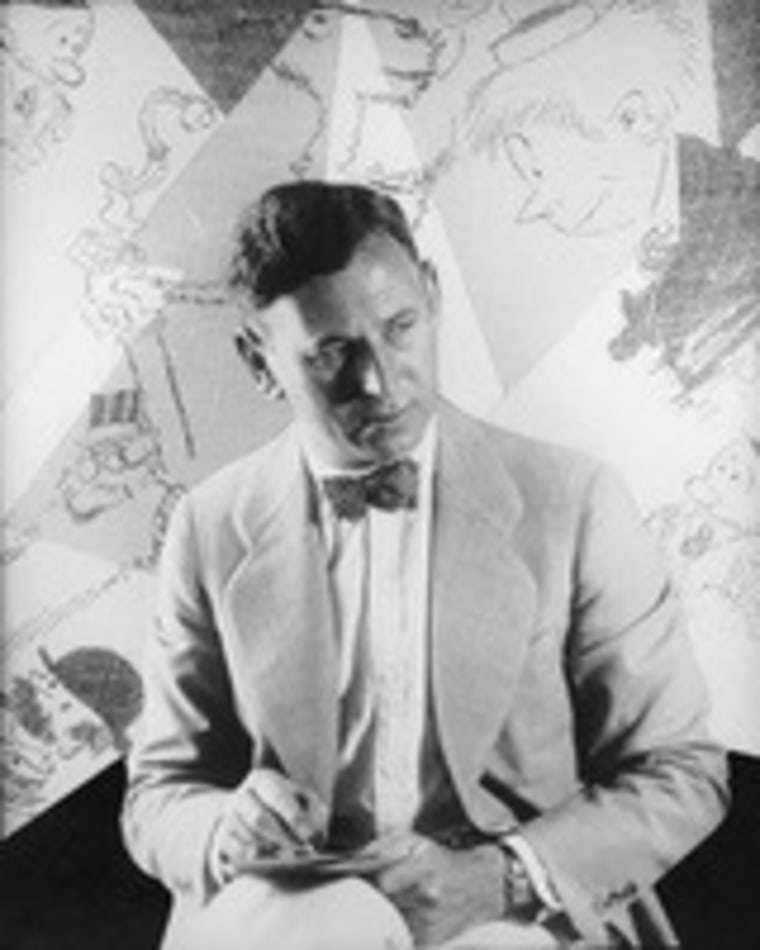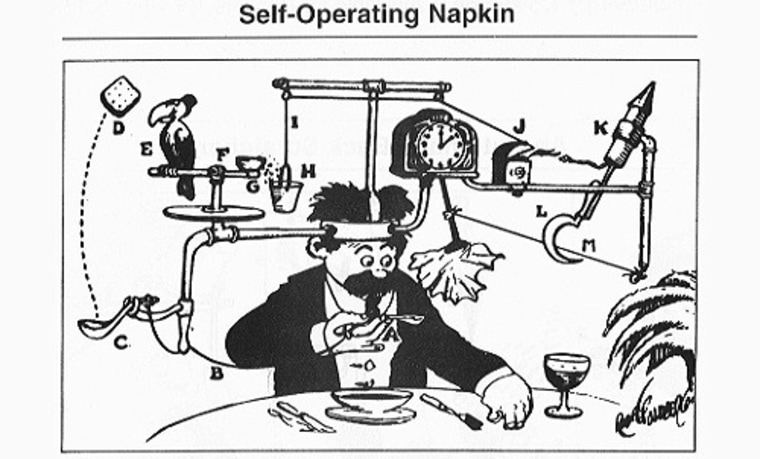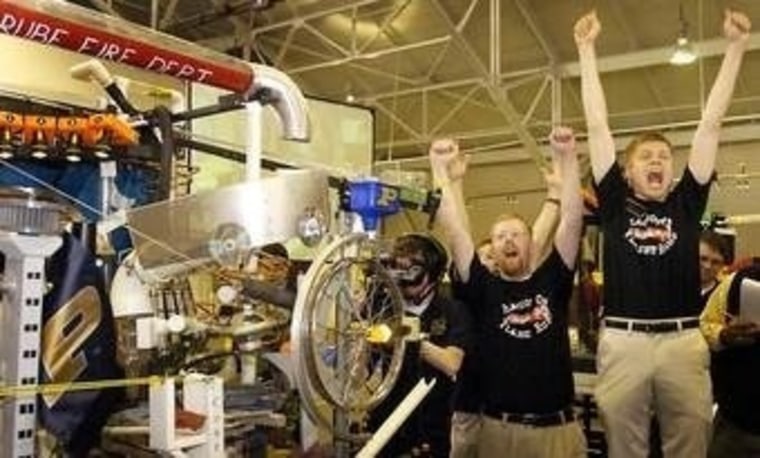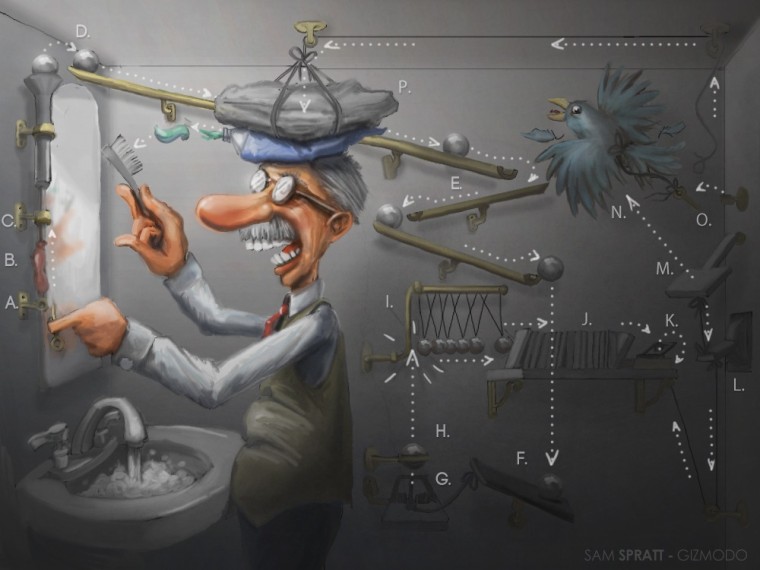From the maddening board game Mouse Trap to that awesome OK GO video (to the hundreds of brilliant contraptions scattered across YouTube), Rube Goldberg machines continue to enjoy a widespread popularity. But who was Rube Goldberg in the first place?

Born on July 4, 1883, Reuben Lucius Goldberg was a one-time engineer and an occasional tinkerer, but he's best known for his work as a cartoonist. His work appeared in five different papers and was eventually syndicated nationally, and he was the founder and first president of the National Cartoonists Society. In 1948, Goldberg won a Pulitzer prize for a political strip commenting on the increasing threat of nuclear weapons.
But it wasn't Goldberg's social commentary that immortalized his name with geeks everywhere; it was his dear friend Professor Lucifer Gorgonzola Butts.
Goldberg, who had majored in engineering at the University of California at Berkeley, began attributing fantastically elaborate machines (that accomplished comedically simple tasks) to a character named Professor Lucifer Gorgonzola Butts, an anagram for Goldberg's full name. The machines were labeled with letters, like a diagram, and included descriptions of how they were intended to function. Take one Butts' most famous contraptions, the Self Operating Napkin:

It's said that Goldberg would spend up to 30 hours designing each machine, carefully plotting out its complex mechanisms. They were born out of Goldberg's fascination with technology and man's pursuit of realizing its promise—as he said, "the machines are a symbol of man's capacity for exerting maximum effort to achieve minimal results."
Rube Goldberg machines quickly inserted themselves into popular culture. In 1931, when Goldberg was in his 50s, Merriam-Webster recognized Rube Goldberg as an adjective that described the process of accomplishing a simple goal by complicated means (and this was long before M-W was in the business of officially adopting words like "bootylicious" and "d'oh!" into the lexicon.)

The machines continue to be a staple of geek culture today. A Rube Goldberg machine delivered Doc Brown's breakfast in Back to the Future and propelled OK GO to perhaps their greatest internet success. The National Rube Goldberg Machine Contest, an annual competition for students, is thriving, and such machines continue to be a go-to conceit for advertisers looking to curry favor with a gizmo-loving audience.
And in some comical but essential way, Rube Goldberg machines reflect the fundamental promise of gadgets: to introduce whiz-bang technology into the stale routines of our lives, at best making them more a little more efficient and at worst just making them a little more exciting. OK, maybe this is finally the time to complete a full game of Mouse Trap
